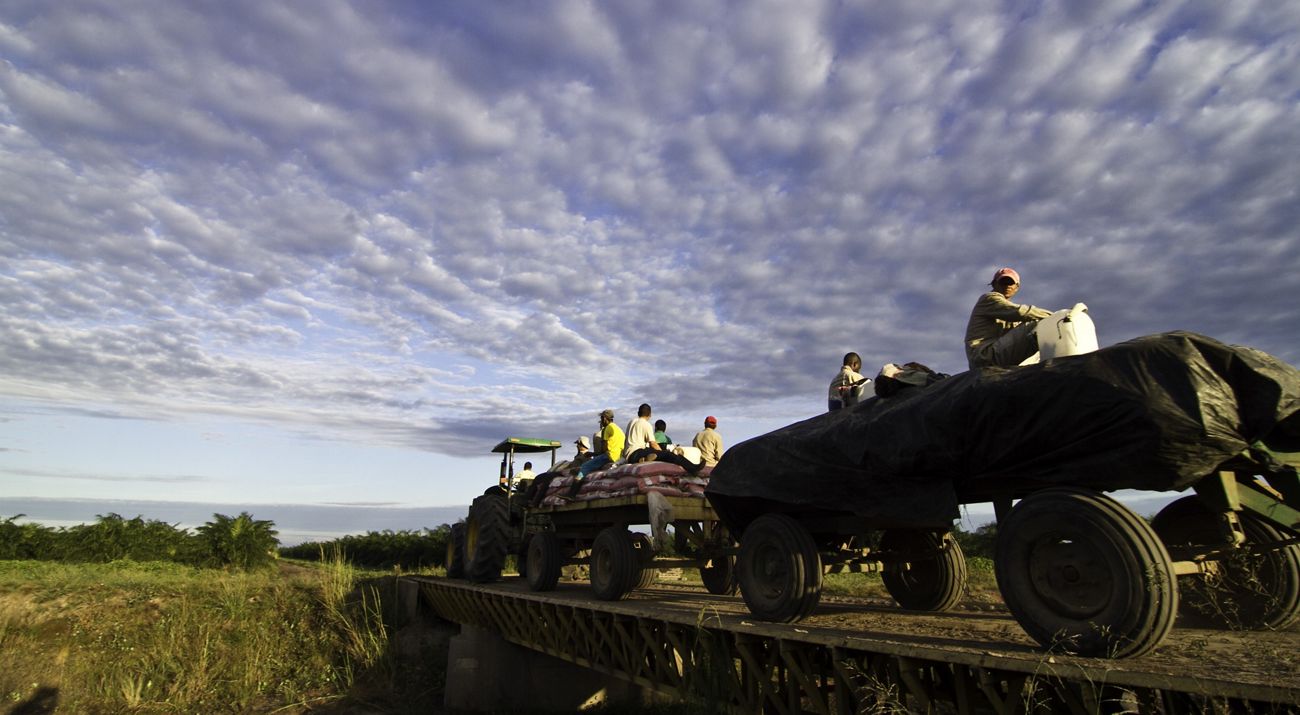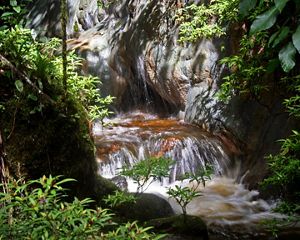
The World’s Eyes Are Watching Colombia’s Orinoquia
By Roger Thurow, Senior Fellow, Global Food and Agriculture, Chicago Council on Global Affairs
The vast tropical savanna of eastern Colombia, known as Orinoquia, is a rare place on Earth. It is one of most biodiverse regions on the planet, featuring plants and wildlife found nowhere else. It also provides a unique opportunity to shape the future of our world.
For here, in the next few years, the pristine grasslands that roll to the Amazon rainforest will be the proving grounds of whether we can successfully avoid a collision of our two greatest challenges: produce more food to nourish an ever-growing population, and preserve the planet from the consequences of shifting diets and increasing resource consumption that threaten our environment, climate and health.
A rarity in our world of finite land and infinite appetites, Orinoquia had largely remained beyond development during the years of conflict. Land use in this sparsely populated region has been primarily small-scale cattle ranching and low-input traditional farming.
As it comes out of a civil conflict that raged through five decades, Colombia is looking to its great savanna to fuel rapid economic growth by satisfying global demand for food. Orinoquia has been identified as a potential bounty not only of food, but of exports, jobs, and income. The 2016 peace accord has spurred billions of dollars in investments to propel such growth. Although plans are still taking shape, up to 14 million hectares—more than half of the region—could be converted into large-scale or intensified agriculture, mostly soybean and palm oil production as well as cattle.
While converting millions of hectares to industrial agriculture would be a unique relief to the relentless demands on the global food chain, it could also contribute to the ongoing degradation and destruction of Latin America’s pristine habitat, creating unintended consequences for the very soil, biodiversity, and water—natural assets upon which agricultural production wholly depends.
Environmental groups are closely watching developments, concerned that in the various land conversion calculations there has been little consideration for the critical role natural grasslands, forest, and biodiversity play in regulating the temperature, rainfall patterns, and soil regeneration for Orinoquia, and potentially for all of Colombia and the region beyond.
In recent decades, Latin America has been scarred by deforestation in the push to expand agriculture and cash-in on the rising global demand for grains and proteins. This has exacted a heavy toll on the region’s environment and biodiversity, and on the world’s climate. Over a recent 15-year period, the destruction of Latin America’s forests was the world’s fifth highest source of global carbon emissions. Yet, the region is an agricultural powerhouse, providing 60 percent of the world’s soybean imports, 44 percent of beef and a third of corn. All eyes are turning to Latin America to maintain global food security as the world’s population rises to more than nine billion in coming decades.
Thus, Orinoquia represents a rare opportunity to make decisions that are good for both the population and the planet. Can Colombia strike a balance between expanding agriculture and cattle production while preserving its biodiversity? Can it produce a planetary model to both nourish and save the planet?
Colombia’s recent presidential election has consequences far beyond its borders. The new administration will face a pivotal choice between using food production models that have proven to be detrimental elsewhere in the region or implementing a greener option that protects Colombia’s natural richness and lessens the strain on the world’s climate while also increasing agriculture harvests.
There is a lot at stake. Colombia, by some estimates, hosts 10% of the planet’s biodiversity, which is particularly valuable for its plant, bird, butterfly, and amphibian species. About 52 percent of Colombia is covered by forests, and the country loses between 120,000 to 140,000 hectares per year, according to the Ministry of the Environment; nearly three-quarters of this deforestation is attributed to extensive agriculture and ranching.
As decisions loom about what, how, and where to develop in the post-conflict era, new sustainable initiatives are emerging. In its current National Development Plan, Colombia is seeking to introduce a green growth model that integrates land use planning, sustainable management and social mobility.
Quote: Andres Zuluaga
Orinoquia stands as the next proving ground. We’re ready to produce more and better foods in a sustainable way.
Last August, a diverse group of environmental and private sector specialists met to discuss achieving sustainable development in Orinoquia. The meeting was organized as part of the Science for Nature and People Partnership’s working group on land-use change in the Orinoquia—the group, which has representatives from CIAT, the Wildlife Conservation Society, The Nature Conservancy (TNC), and the Colombian National Planning Department, seeks to bring together producer organizations with scientists and conservation planners to help the government evaluate the impacts of land use change on nature and people. They warn against the government making land conversion decisions without fully studying and understanding the impact on the climate, soil, water and biodiversity—all critical assets for maximizing the agricultural productivity that Colombia is seeking to promote.
The environmentalists also maintain that the country prioritize rehabilitating existing degraded lands for agriculture use before making decisions on large scale conversions. “Pasture lands that are degraded can be restored, and this process generates multiple benefits for farmers and livestock-keepers, as well as the environment,” says Glenn Hyman, a geographer and researcher with CIAT. Healthy soils, he explains, accumulate carbon, spur the growth of cover crops and reduce the need to expand livestock grazing into the native savanna and forest.
Hyman and other scientists are working in the region to document the business case for sustainable agriculture. “The great challenge for Colombia is achieving a sound landscape plan that includes smart investment options, effective methods to give nature back what it gives us, and technologies that minimize or eliminate negative environmental impacts. But it can be done,” says Ruben G. Echeverría, Director General of CIAT.
Farmers and ranchers in Colombia and elsewhere throughout Latin America who are already implementing practices to preserve natural habitats and restore damaged areas are reaping greater harvests and increased income, while monitoring studies confirm growing biodiversity of insects, birds and plants, reduced water use, and reduction of greenhouse gas emissions.
“Orinoquia stands as the next proving ground,” says Andres Zuluaga, who leads the lands conservation program in Colombia for TNC. “We’re ready,” he says, “to produce more and better foods in a sustainable way, contribute to national and international nutritional needs, and generate good profits and wellbeing for producers, while reducing environmental impacts, preserving biodiversity and protecting key natural ecosystems.”
Will it succeed? The world is watching.
Originally posted on Chicago Council on Global Affairs on July 6, 2018.


